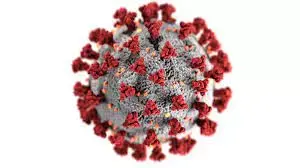

To be alive on this planet means we’re constantly in an evolutionary arms race to remain alive. Our adaptive immune response (T-Cells and B-Cells) was the answer evolutionary to mammalian viruses. Meaning, the “toll” our immune system takes is literally why we have it. From a virology and immunology standpoint, it’s understood viral infections lead to dysregulation as viruses are parasites with one goal, hijack our cellular machinery to reproduce. As far as opportunistic infections are concerned, that’s also in the same boat. The immune system is distracted, so it’s not as focused on playing defense. But, we’re all at risk of opportunistic infections simply by taking antibiotics, even with zero environmental influence. As far as comparing the mutation rates of influenza and coronaviruses, influenza wins hands down every time, it’s not even a competition. Influenza is a single stranded -RNA virus, while SARS-CoV-2 is a single stranded +RNA virus. So basically, out the gate, influenza has more opportunity to mutate as it’s required to bring its own polymerase to infect a host, while the other is ready to rock when it shows up. This provides a lot more opportunity for influenza mutations, no if, and, or buts. Additionally, both influenza and SARS-CoV-2 are enveloped respiratory viruses, so neither really has an edge here. Moreover, there is absolutely no question that when a virus first jumps species as a result of a mutation, it’s much more fatal. Yet, mutations are random, so it’s a role of the dice at best. Depending on the virus, a certain amount of the “offspring” will always be non-infectious because of this gamble. But a virus needs us, so killing us also kills it. This is why they’re more fatal when it initially jumps species. Lastly, persistent infections are seen in both SARS-CoV-2 and influenza. Granted, more so in the former, as influenza’s been around for ages, so our immune response is much more wise to its tactics. I don’t mean to talk down here at all, this is just a field I’m VERY familiar with, so I wanted to help you hone in your understanding on the topic!













Well said! The aspects you highlighted here are great points to make when it comes down to the lab made conversation. If it was apples to apples regarding only mutation, I see SARS-CoV-2 having an edge. Yet, influenza has an ace up it’s sleeve known as reassortment. This compounds it’s already substantial mutation rate. Reassortment arises during the co-infection of different influenza viruses and produces novel variations 46%-86% of the time. Reassortment is attributed to influenza’s segmented RNA genome, which is a pretty rare trait across viruses. This is basically influenza’s mutation multiplier and keeps it ahead of the curve across the board.